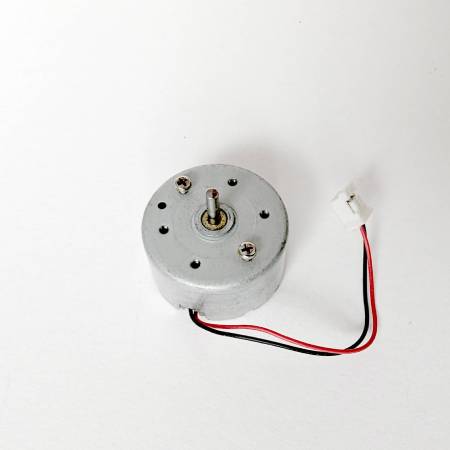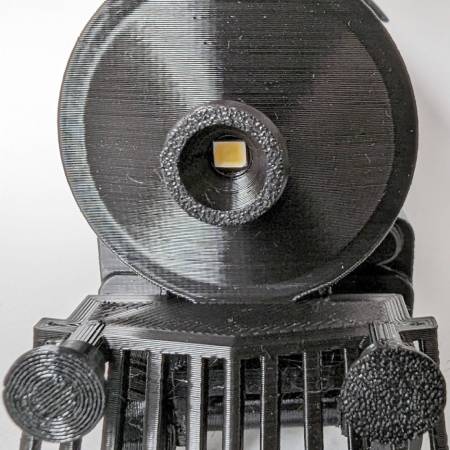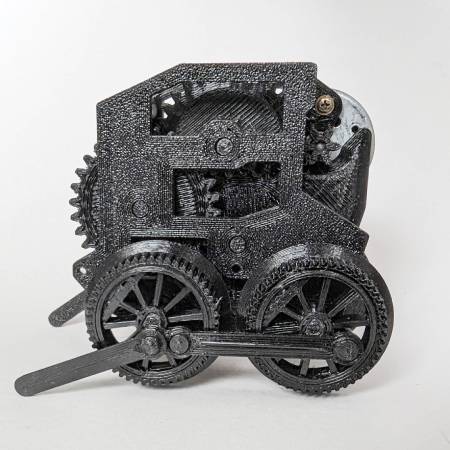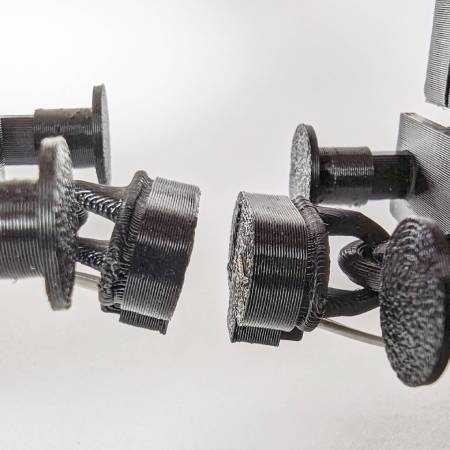Locomotive Loli-9451

Locomotive name
This is the first locomotive I have built. It went through an enourmous amouont of changes both in structure and looks. The name came from a label on the motor I took out of some old CD ROM drive.

Acquiring parts
So this locomotive uses a motor from an old CD ROM drive. The headlight is an LED from a dead LED light bulb. Cables are made from old PATA HDD flat cables which are stripped down into wires. You can salvage all these components from your old electronics as I would strongly recommend, but they are also widely available in the market.

Wheels
It has two front wheels which rotate in a carriage to follow the shape of the track. There are 4 drive wheels in the back mounted on a gear reductor with the motor. In order to increase traction, the locomotive features rubber tyres which are 3D printed. Also to improve traction, especially when there are more wagons attached, the locomotive is filled with fishing weights and amounts to aproximatelly 500gr in weight.

Connector
The connector is magnetic and it transfers electricity. Magnets are 6mm x 3mm neodymium magnets, also widely available in the market. Connectors are assembled with or without super glue. This way you can attach the locomotive and all the wagons easily and they can all be powered. The locomotive receives power through the connector, the batteries are not located in the locomotive. There is a coal wagon for this.
Think about the environment
I have done my best to design the locomotive in such a way that it can be easily repaired and if really necessary salvaged. It is both sturdy and doesn't use too much plastic. So be responsible to the environment if things go wrong and try to reuse or repair whatever you can. Let's make this a legacy game and not a consumer one :)